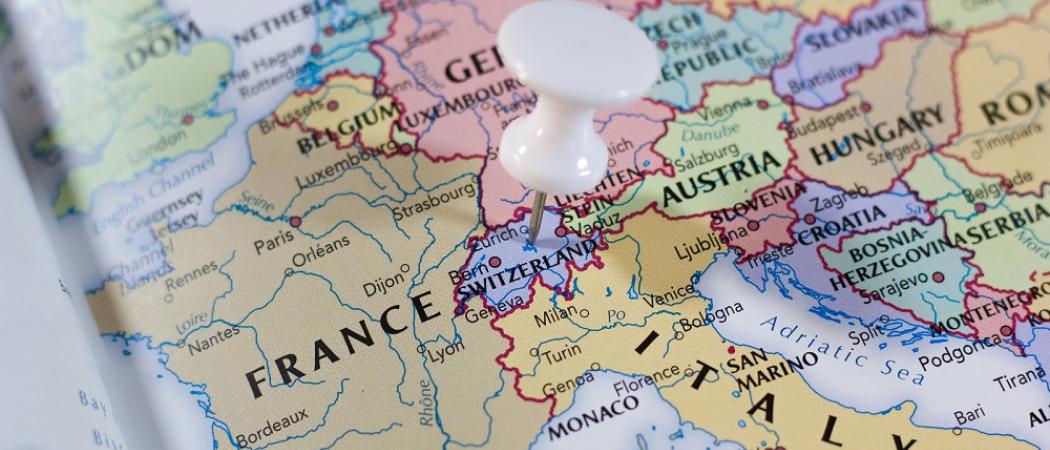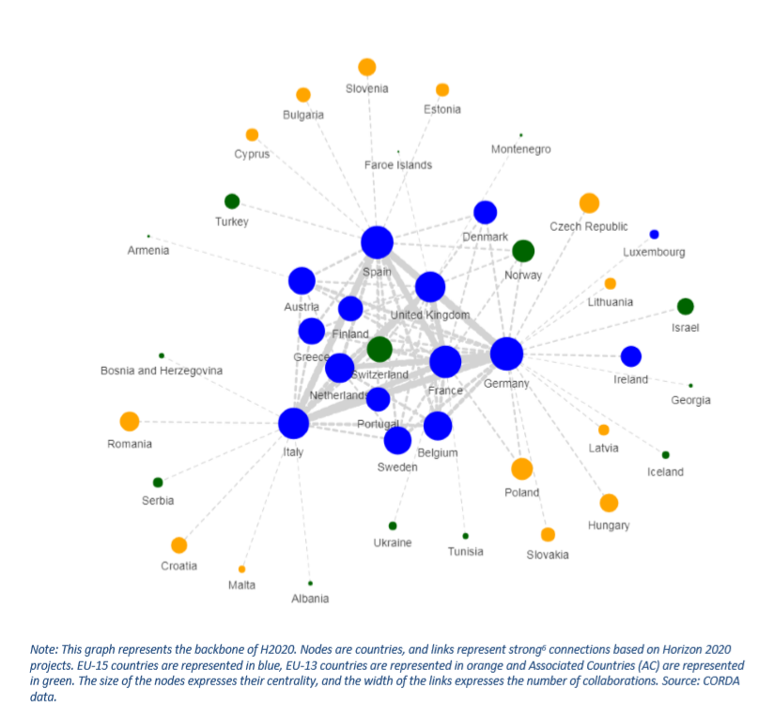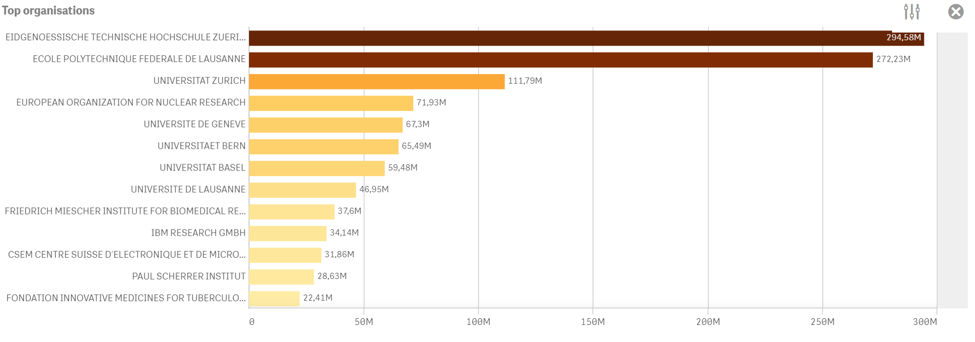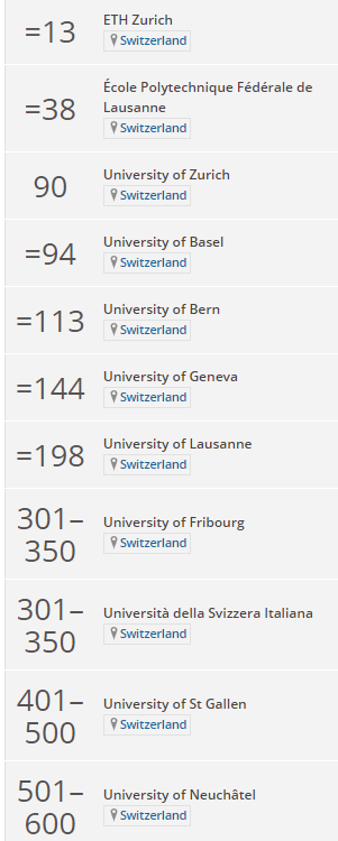A hugely successful research system is being tested by a row over immigration and a deteriorating relationship with the EU

Low tax, open borders and a high level of public investment in research and education have helped make Switzerland, a landlocked, mountainous country of a mere 8.5 million people, the home of some the world’s leading science-based companies and an incubator of globally competitive start-ups.
The €700-odd billion Swiss economy – among the world’s 20 largest – has for a long time had the not-entirely flattering reputation for being the place where fortunes rest behind strict bank secrecy laws.
But Switzerland is more than a tax haven. Its wealthy banks and sophisticated financial services sector are open to investing in early stage technology companies, and to maintain this support as they grow.
The population is highly skilled, and the country is a polyglot mix of German, French and Italian speakers, with many frighteningly fluent in multiple languages. The government invests some 3.4 per cent of its national income in research and innovation, according to 2017 figures, which is higher than the 2.3 per cent EU average. For the past eight years, the World Intellectual Property Organisation has designated the Swiss as the most innovative people in the world.
Swiss-based researchers produce roughly 1.2 per cent of all scientific papers published worldwide, putting the country in 17th place in international rankings. Publications are mainly concentrated in the fields of life sciences (26 per cent), clinical medicine (24 per cent) and physical, chemical and earth sciences (23 per cent).
The country is very open to “difficult science start-ups”, says Mario Michan, co-founder and chief executive officer of Daphne Technology, a spin-out from the Swiss Federal Institute of Technology in Lausanne (EPFL). An MIT ranking of nations by the complexity of the products they export places Switzerland second behind Japan. The country also ranks as the second greenest place in the world, only outperformed by Sweden, according to the 2018 Global Green Economy index (The Swiss last year held a memorial service for a glacier lost to global warming in the Alps).
Switzerland attracts talent from all around Europe in increasing numbers, largely due to the lure of high salaries in ecosystems developed around top universities. An agreement with the EU on free movement of labour also means no citizen of an EU member country requires a visa to work in Switzerland.
Money, of course, is not the only measure of success; the country recognises it has some issues to address in its research system.
Representation of women in labs remains low compared to other countries. In its next four-year national funding cycle, starting in 2021, one of the main priorities of the Swiss National Science Foundation (SNSF) is to attract more women by introducing women-only grants in the life sciences, science, technology, engineering and mathematics. The foundation, the country’s biggest public research funding body has a budget of around CHF1 billion (€940 million) per year for basic science, backing hundreds of projects involving tens of thousands of researchers annually.
More urgently for Switzerland science, the last few years has seen a deterioration in what has long been a close ties with the EU.
The shape of Switzerland’s future relationship with Brussels and the rights of Swiss-based nationals to compete for EU grants is now in question. An impending national referendum on freedom of movement and a standoff over a new treaty is generating uncertainty about how funding and researchers will flow to and from Switzerland in the future. Doubts about the Swiss place in the €90 billion Horizon Europe R&D programme could limit the appeal of forming partnerships with researchers and companies based in the country.
The EU kicked Switzerland out of its research programme back in 2014, when anti-immigration campaigners won a similar referendum — so it’s not something scientists are taking for granted.
Swiss niches
The country, which has a reputation for developing new, specialised niches, has a commanding position in chemical, pharmaceutical, machine and electrical engineering industries. Forty per cent of Swiss exports are from pharma and biotech.
The country has the highest concentration of medtech firms in Europe, attracting capital and talent from around the world. After the US, Switzerland spends the most per capita on healthcare, making it both an attractive base and an attractive market for medical equipment manufacturers.
The country is also the top holder of pharma patents in Europe, with 956 filed in 2018. The most filings (651) in that year came from Roche. Number two for patents was the Zurich-based robotics and heavy electrical equipment giant ABB (571), followed by Nestlé (382) and Novartis (305).
Yet despite the tag of most innovative country in the world, the country’s start-up scene is overshadowed by Berlin and London. The high cost of living and relatively small population means it’s unlikely you’re going to see the next €1 billion internet company coming out of Zurich.
New initiatives are attempting to make the country more start-up friendly. Entrepreneurial groups like Impact Hub Zurich, support programmes like Venture Kick and startup events like TOP100 Swiss Startups Award and Startup-weekend are helping to bring founders and investors together.

Switzerland and the EU: on shaky grounds

Switzerland currently leads the list of the 16 non EU countries associated to the Horizon 2020 research programme. The odds of winning a European Research Council (ERC) grant look pretty good if you’re in Switzerland, with a 21.9 per cent success rate, versus the European average of 12.7 per cent.
The top participants in Horizon 2020 are the country’s two biggest universities, ETH Zurich, with €295 million in grants and EPFL with €272 million. Last year alone, ETH received CHF64 million (€60 million) from Horizon 2020 – about 3.5 per cent of its CHF1.8 billion budget.
Yet despite the country’s obvious success in EU research programmes, the relationship between Switzerland and the EU, which spans a complex web of more than 120 bilateral contracts, has never been straightforward. The Swiss have long rotated between seeking closer engagement with their powerful neighbour and preferring a more independent course.
Worryingly for researchers, the 2014 referendum vote against freedom of movement wasn’t a one-off, and the anti-immigration Swiss People's Party, which has the majority of seats in parliament, has announced another referendum will take place in May. The party questions the sustainability of immigration that has been increasing for more than a century, making it one of the highest rates in the world.
The vote heaps pressure on already-sensitive negotiations between the EU and Switzerland over a new, overarching treaty to reinforce the integration of Swiss market-access agreements currently in force. Should the referendum succeed – a slim chance, according to recent polling – there could be lasting damage to the Swiss research relationship with Brussels.
For a country shaped by waves of migration – more than half of Switzerland’s scientists are foreign nationals – the result could be seismic.

Two education heavy hitters

Switzerland has 12 universities, 10 of which are funded at the local level and two at the federal level. Eleven of these are in Times Higher Education (THE) 2020 university ranking, leaving only the University of Lucerne, the smallest university, behind.
Switzerland spends 15.5 per cent of GDP on education – in France, for comparison, the figure is 9.6 per cent – and has the second highest share of PhDs among OECD countries. Universities charge average annual tuition of only €1,000.
The two federal institutes of technology, ETH Zurich and EPFL, are connected in the extreme, with over 60 per cent of teaching staff in both institutes hailing from outside the country.
The highest ranked institute, ETH Zurich, number 13 in the THE 2020 ranking, counts 21 Nobel laureates, including Albert Einstein and Wolfgang Pauli. The university has spun out 407 start-ups since 1996. ETH students and professors are responsible for 109 patent applications on average every year.
At EPFL almost half of the students hail from outside Switzerland; the institute counts more than 120 different nationalities. The institute specialises in natural science and engineering and has an innovation park on campus, attracting names like Nestlé and Frontiers, the open access publisher (it was also formerly home to Mindmaze, Switzerland’s only unicorn company). Companies in the park, aside from paying rent to the university, often also feed investment into research activities, such as PhD positions. The institute spawned 245 start-ups between 2000 and 2017.
Since the founding of the ERC in 2007, ETH and EPFL say they have had combined success rates of 39 per cent for senior researchers, more than three times the EU average.





 A unique international forum for public research organisations and companies to connect their external engagement with strategic interests around their R&D system.
A unique international forum for public research organisations and companies to connect their external engagement with strategic interests around their R&D system.